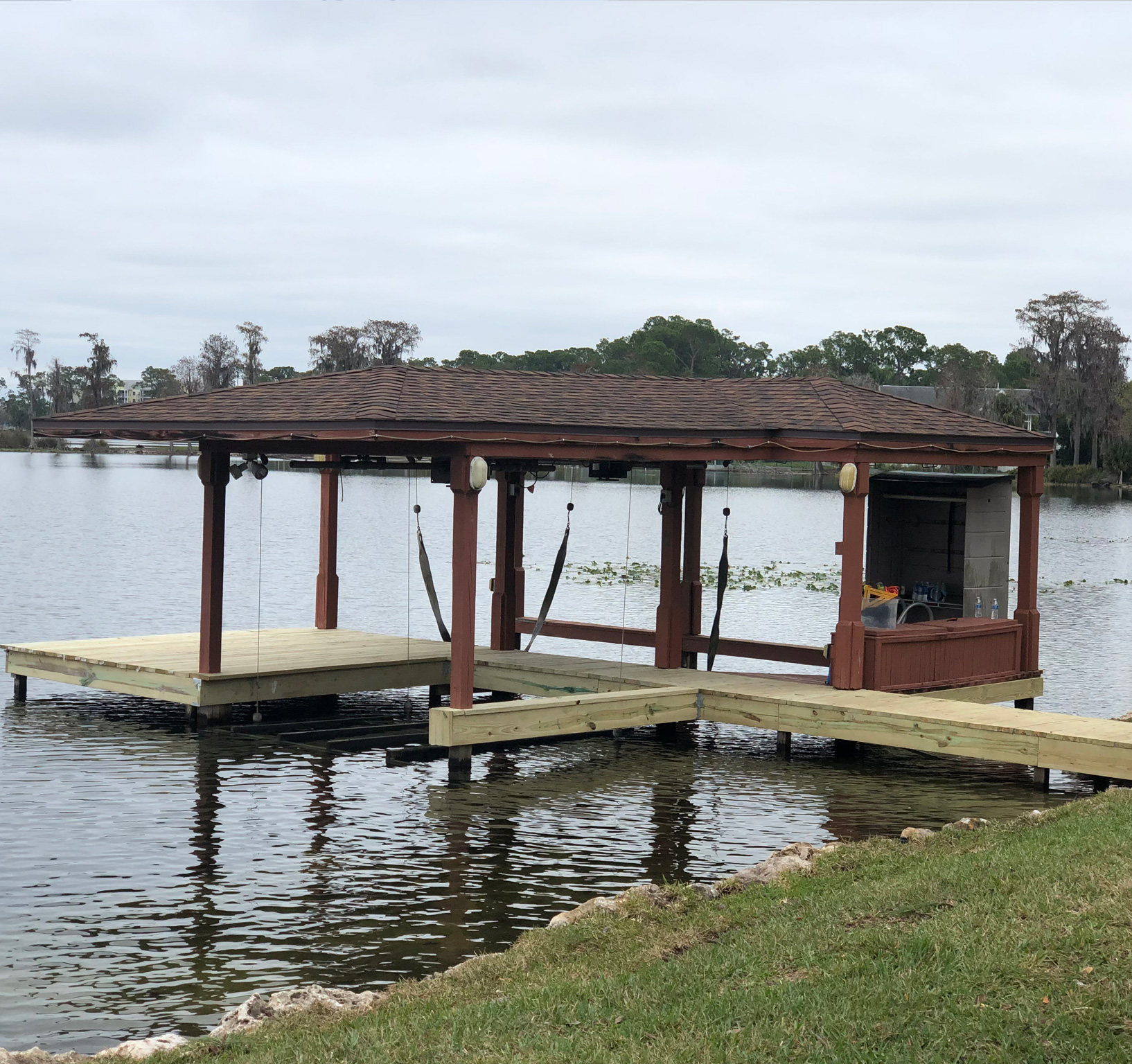Why Routine Upkeep Can Minimize Future Dock Repairs
Why Routine Upkeep Can Minimize Future Dock Repairs
Blog Article
Effective Dock Repair Techniques: Ensuring Structural Integrity
Ensuring the architectural stability of anchors via effective repair service methods is paramount for the long life and safety and security of marine centers. Consequently, picking the ideal repair materials, such as corrosion-resistant alloys and composite materials, is critical for longevity.
Assessing Dock Damages
Examining dock damages is a vital first action in guaranteeing the structural integrity and security of any type of docking facility. Trick aspects to analyze include the dock's foundation, pilings, outdoor decking, and equipment (Dock Repairs).
Structural designers or certified examiners normally execute these assessments making use of specialized devices and strategies. Undersea assessments might utilize sonar equipment or remotely ran automobiles (ROVs) to spot submerged damages. Above water, visual assessments are complemented by utilizing wetness meters and various other diagnostic tools to uncover underlying problems not quickly visible to the naked eye.

Picking Repair Service Materials
Picking the suitable repair service products is a critical step in the dock remediation process, one that directly affects the long life and performance of the repaired framework. Material option have to be driven by elements such as ecological problems, load-bearing needs, and compatibility with existing dock components.
Along with timber, composite products are increasingly popular because of their sturdiness and reduced upkeep requirements. Compounds, usually made from a blend of plastic and timber fibers, provide outstanding resistance to rot, insects, and UV damages. For steel docks, selecting corrosion-resistant alloys such as galvanized steel or marine-grade aluminum is necessary to stop rust and guarantee structural integrity in saline water conditions.
Epoxy resins and marine-grade sealers are important for fixing cracks and securing joints, providing a water resistant obstacle and boosting the dock's total toughness. By meticulously selecting top quality materials, dock repairs can achieve durable outcomes, consequently securing against future degradation and guaranteeing safe, dependable usage.
Architectural Reinforcement Techniques
Effective structural reinforcement techniques are essential in ensuring the stability and durability of dock repair work. This approach is specifically effective for anchors subjected to hefty lots or harsh environmental problems.
An additional crucial strategy is the application of fiber-reinforced polymers (FRP) These products use high strength-to-weight proportions and exceptional resistance to deterioration, making them excellent for strengthening concrete or wooden anchors. FRP can be applied in strips or sheets and bonded with epoxy materials to boost structural integrity.
Bracing and securing systems additionally play a crucial duty in structural reinforcement. Cross-bracing, making use of metal or wood beams, can combat side forces, reducing persuading and motion. Anchoring systems, such as helical piers or driven piles, supply a stable foundation by moving lots to much deeper, more secure soil layers.
Lastly, the integration of load-distribution plates can help disperse weight a lot more evenly throughout the dock's surface area, minimizing local tension factors. These strategies collectively ensure that docks continue to be safe and durable, capable of withstanding the rigors of their operational atmosphere.
Advanced Repair Work Techniques

Another sophisticated strategy entails underwater welding, which permits for fixings to be carried out without the requirement to dewater the location. This approach is particularly helpful for resolving architectural concerns in submerged dock parts, guaranteeing marginal disturbance to operations. Improved welding strategies, coupled with robot systems, supply precision and reliability, thereby extending the lifespan of the dock.
In addition, cathodic security systems are executed to avoid deterioration in metal dock structures. By making explanation use of sacrificial anodes or satisfied existing systems, these strategies successfully mitigate the electrochemical processes useful link that bring about product damage.
Last but not least, progressed tracking modern technologies, such as architectural wellness tracking (SHM) systems, offer real-time data on the problem of dock structures. These systems enable aggressive upkeep and timely interventions, inevitably guaranteeing the lasting structural integrity of the dock.
Upkeep and Avoidance
Maintenance and prevention are fundamental principles that underpin the long life and safety of dock structures. Regular examinations are paramount, permitting very early detection of wear and tear, possible weak points, and ecological impacts. A proactive method, including routine checks for corrosion, rot, and architectural changes, mitigates expensive fixings and lengthens the dock's functional life.
Safety nets need to consist of using safety finishings to steel parts to defend against corrosion and making use of cured timber to withstand decay. Furthermore, making certain appropriate drain and air flow can avoid water build-up, which is a typical reason for architectural deterioration. Integrating quality materials and sticking to supplier standards throughout building and construction and fixing stages likewise play vital functions in enhancing sturdiness.

Training employees in dock upkeep finest techniques guarantees regular application of precautionary measures. Leveraging technological developments, such as drones for examinations and sensing units for real-time tracking, can additionally boost maintenance efforts. By focusing on maintenance and prevention, dock owners can make sure architectural honesty, functional safety and security, and affordable administration over the dock's life expectancy.
Final Thought
In final thought, maintaining the structural integrity of aquatic centers demands extensive dock repair strategies. Advanced fixing methods, coupled with description regular maintenance methods, make sure the dock stays functional and safe under diverse environmental conditions.
Making certain the structural integrity of anchors via effective repair service strategies is extremely important for the longevity and safety and security of aquatic centers.Picking the proper repair products is a critical action in the dock reconstruction process, one that straight influences the longevity and efficiency of the repaired structure.Effective architectural reinforcement methods are essential in making sure the stability and durability of dock fixings. By focusing on upkeep and prevention, dock owners can make sure architectural stability, operational safety and security, and cost-effective monitoring over the dock's lifespan.
In final thought, keeping the architectural stability of marine facilities requires detailed dock repair techniques.
Report this page